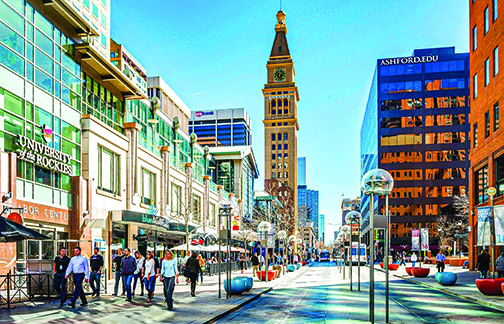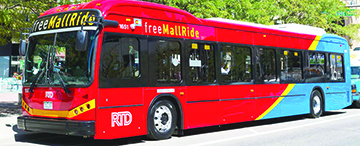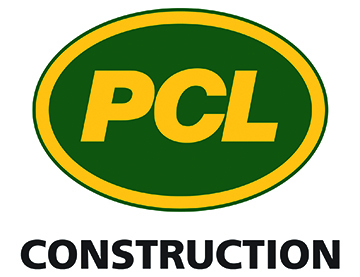“This is not elective surgery. The Mall is falling apart.” — Mark Sidell, President of Gart Properties, Downtown Denver
The Mile High City’s pride and joy of walkable, large-scale retail commerce is showing its age. This project has been in the discussion and planning phases for at least 10 years, and now, a collective of developers and government agencies have aligned in unanimous agreement that the 16th Street Mall needs an overhaul.

16th Street: Denver’s 16th Street Mall sees incredible foot traffic that has worn it down after nearly 40 years.
This coalescence of groups (primarily) involves the Department of Transportation and Infrastructure (DOTI), Denver Urban Renewal Authority (DORA), the Federal Transit Authority (FTA) and the Downtown Denver Partnership.
The 1.2-mile stretch of walkable commerce and free transport via the RTD MallRide was first opened in 1982. In its inception, the installation was hailed as an unprecedented milestone in urban renewal. The accessible design and pedestrian-friendly layout brought much needed revitalization to a historic yet dilapidated district of run-down tenements, boarded-up warehouses and a pervading sense of imminent danger. While the design has more than served its purpose, wear and tear and the ever-shifting tide of social trends have made it clear that it’s time to streamline the layout for a more user-friendly look and feel.
A Popular Destination
The Downtown Denver Partnership reports (in recent years, pandemic notwithstanding) the 16th Street Mall sees an average of 20,000 pedestrians per day. Meanwhile, the RTD MallRide carries anywhere between 25,000 and 39,000 passengers per day. This sort of traffic takes its toll, as the signature granite pavers used to give the mall its distinctive look must be replaced frequently. This creates an economic strain of around $1 million per year across 75 or so days of maintenance. These large stone blocks were originally rated for a 30-year lifespan underfoot, so many of them have outstayed their tenure.
Streamlining Transit
The prevailing feature the redesign addresses is the areas between the RTD buses which travel up and down the mall at regular intervals

MallRide: The RTD Free MallRide transit bus lanes will be consolidated to create more sidewalk room.
, especially the six-foot stretch between Broadway and Tremont and the 14-foot stretch between Tremont and Arapahoe. With particular reference to the latter measurement, this no-man’s land of abandoned chess tables, exhaust-choked planters and mumbling stumblebums used to be a quaint space for gathering, enjoying shade and sitting down for a rest between shopping sessions.
Due to the increasing frequency of MallRide traffic, these “between zones” have been relegated to underused areas rather than celebrated gathering spaces. It has also been unanimously concluded that, by placing the RTD transit lanes in proximity side by side, a much larger pedestrian sidewalk area can be created. This will reduce congestion, increase foot traffic volume and potentially boost commerce in the long run.
Mark Sidell, President of Gart Properties, which includes the Denver Pavilions and several dozen retail spaces on the mall, sees

Spearheading: The Denver Department of Transportation and Infrastructure is spearheading the Mall’s improvement project.
the project as a design upgrade that will offer an attractive array of benefits and opportunities. “Think of the mall as one big hallway,” he begins. “The redesign will transform it to a hallway with a living room on either side.” Sidell is referring to some of the as-yet undivulged design ideas which will include gathering spaces, performance areas, extended patio zones for restaurants and bars, and places for retail kiosks. In essence, consolidating the RTD MallRides in the “between zones” is going to make a world of difference.
Out With The Old
In terms of infrastructure, the proposed improvements will address and correct several long-standing issues. First, a 200+ year-old drainage system will be replaced with modern engineering, new trees will be planted along either stretch of sidewalk and new pavers will be installed up and down the entire length of the street in a pattern similar to the current design.
On January 21st of this year, the City of Denver announced it had selected PCL Construction to design and build the new 16th Street Mall. In a recent press release, Eulois Cleckley, Executive Director of DOTI, stated, “We’re thrilled to have reached this latest milestone on this landmark project that improves safety and mobility along the mall and attracts commuters and visitors with interesting new spaces and places for people to enjoy. The contract we present to Council in the coming weeks will reflect a decade of planning and recent input from groups representing business owners, workers, community members and people with disabilities.”
The aforementioned news item also states the project is slated to get underway “… in late 2021 and be completed by the end of 2024.” While the long-term benefits of the remodel are numerous and

PCL: PCL Construction is a familiar presence in the Denver area, and will be the main reconstruction contractor.
far-reaching, the City promises a swath of immediate economic stimulus-like benefits that will counteract the Covid-19-induced recession. These include nearly 1,500 jobs for trades apprentices and skilled laborers, $107M in labor income, $261M in sales (for building materials) and an across-the-board bolstering of the Gross Regional Product (GRP) by some $3.7B.
What Does It All Mean?
While these numbers look great on paper, the big question on everyone’s mind — especially local business owners, service industry workers, retail workers, restaurateurs and patrons — is how will this affect business between the beginning of the project in late 2021 to its projected completion sometime in 2024? Sidell expounds on his understanding of the role the contractor will play during construction; “PCL is charged with always keeping the pedestrian traffic open. You’ll always be able to get through whether you are walking by yourself or with a group and it will be ADA (Americans with Disabilities Act) accessible and I am confident that they will do that,” he explains. “All that said,” Sidell continues, “are you going to want that [construction] in front of your place of business even one day longer than it has to be? No, of course not. However, it is construction that is going to be conducted in a way that has been very thoughtfully planned out. They have placed a high priority on maintaining access, safety, signage and keeping businesses open.”
A transparent approach has been orchestrated through a series of meetings between project planners and local retailers, property owners, restaurants and the general public. “They’ve done a great job of getting a lot of public interest into the project because everybody has a different perspective and it’s important to get the input of all mall users.” He says. “I am pretty optimistic about what the other side will be … I am confident that a lot of really smart people are working on it, but I’m a realist — it’s still construction.”
The Show Must Go On
Construction in public areas almost always means detours, and this project is no exception. Julie Smith, Director of Communications for the City of Denver Department of Finance explains, “The Free MallRide shuttle will continue to serve the Mall area throughout construction. In active construction zones, the MallRide will be detoured to 15th or 17th (depending on the direction) which both have dedicated bus lanes which can accommodate the MallRide’s frequent stops without disruption to other vehicular traffic. Also, the RTD MallRide will operate on the Mall normally for the blocks that are not under active construction.”
Her office assures that business and leisure on the mall will still be underway throughout construction. She states, “Mai
ntaining continuity and predictability for the traveling public during construction is extremely important to the project. As the contractor moves from design into construction, we have a systematic process in place to control the construction work and minimize the overall impact to the community. Safe, pedestrian access to businesses and residences will be maintained throughout the project.”
Through Thick And Thin
Meanwhile in the Mall’s private business sector, Cindy Kent is the owner of A la Carte Flowers and Baskets and she is persevering through a year that has put many of her neighbors out of business. When asked about how she thinks construction will affect businesses on the mall, she responds with the exuberant laugh of a business owner who has a healthy sense of skepticism. “The biggest challenge on the Mall right now is parking,” she begins. “I have a paid parking spot because it is an absolute necessity. But my drivers are constantly looking for parking, so construction is going to no doubt drive my rates up.”
A former member of the Downtown Denver Partnership, Kent explains, “I have been hearing rumors of this project for the 20 years I’ve been in this location” (910 16th Street Mall #312). “It’s not egregious enough that we just went through what we went through,” she continues, “We are on the heels of barely coming back in the fourth fiscal quarter and this is their timing?” Regardless, Kent’s 25th anniversary of being in business is coming up, and she’s as determined as ever to weather yet another large-scale disruption. “I get that is finally underway,” she quips, “But I’m really just rolling my eyes at this point.”


